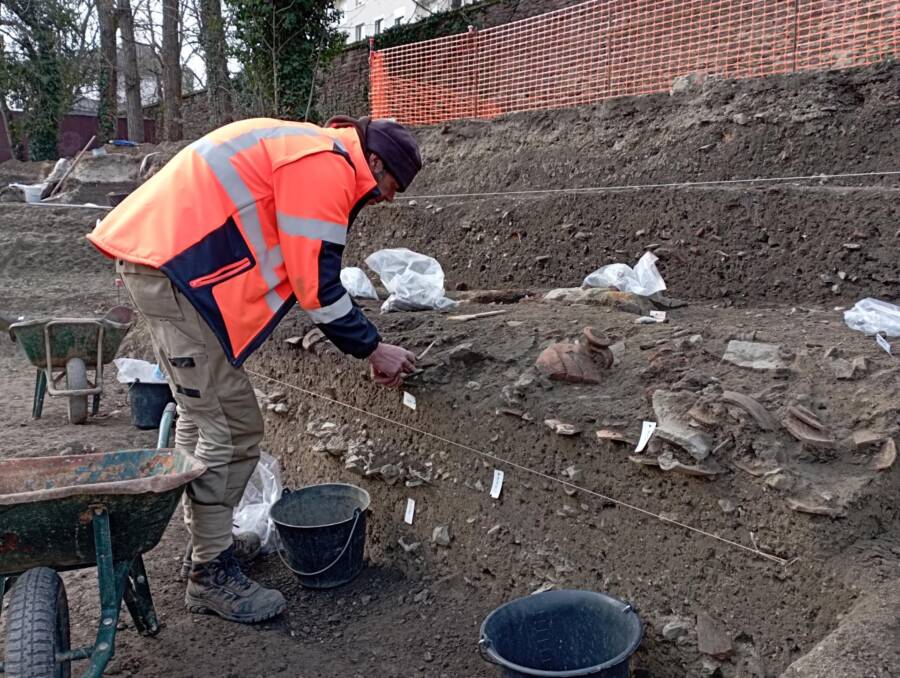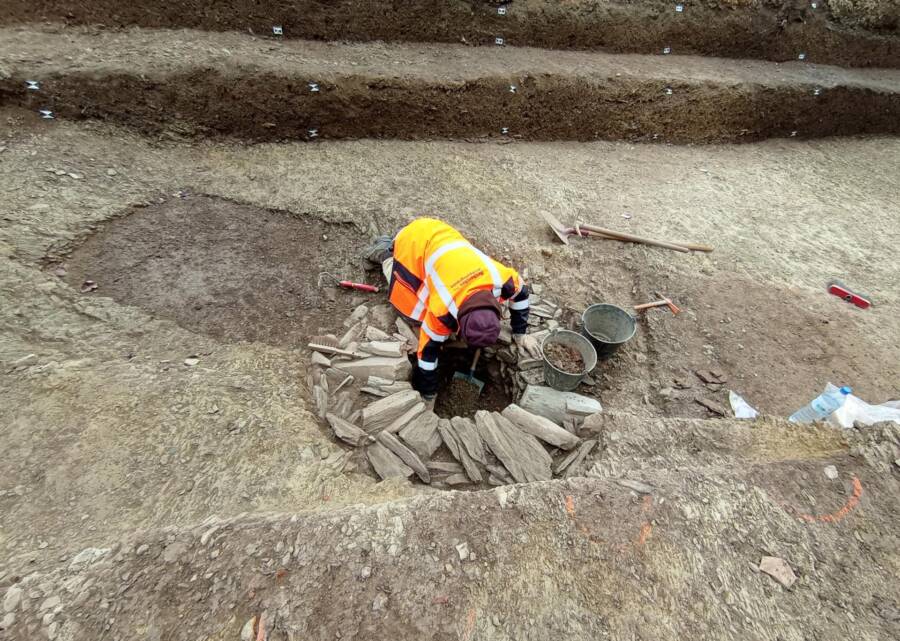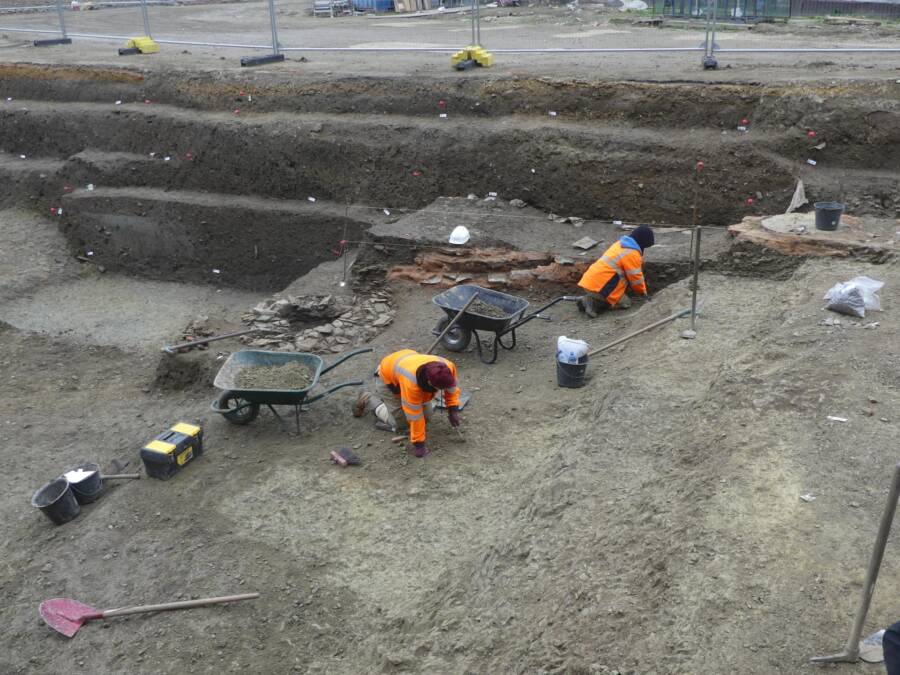In total, archaeologists recovered over 40 pounds of ancient Roman artifacts, including ceramic pottery fragments and terracotta statuettes.

InrapSeveral statuettes depicting the goddess Venus were found at the site, along with numerous other relics.
Archaeologists in France have discovered a trove of relics dating back to 1,800 years ago, including figures of the goddess Venus, coins, and clothespins. The discovery was made in the French city of Rennes, in a Roman shale quarry that was later repurposed as a trash dump.
The team from the French National Institute for Preventative Archaeological Research (Inrap) determined that this quarry-turned-dump was likely important in constructing Rennes, then known as Condate Riedonum, at the time of its founding during the first century C.E.
The excavation site is more than six-and-a-half feet deep and laid out in stages. The quarry was used to extract Brioverian shale that served as the constructional foundation of many walls and streets throughout Rennes, but it was abandoned in the second century.

InrapA number of ancient Roman artifacts and pottery fragments embedded in the dirt.
After the quarry was used up, ancient locals used the site as a trash dump.
According to the Miami Herald, archaeologists unearthed roughly 44 pounds of broken ceramics from the site, as well as a 2,000-year-old pottery kiln, several ancient coins, glass beads, brooches, clothes pins, and terracotta statuettes. Two of these statuettes depict Venus, the Roman goddess of love.
One Venus statuette shows her with her torso draped in fabric. This interpretation is known as Venus genetrix, or “mother-goddess.” The other depicts Venus in the nude, wringing water out of her hair with her right hand. This depiction is known as Venus anadyomene, “rising from the sea.”
During the Roman period, Venus also became closely associated with emperors and stood as a symbol of Roman power.
By the end of the medieval period, archaeologists said, the old quarry was completely filled and once again repurposed as a spot for domestic activities and craft production, as evidenced by the remains of wooden buildings and a well-preserved well.

InrapAn Inrap archaeologist clearing out an immaculately-preserved well at the site in Rennes.
“The Romans are famous for developing quarries all over the Mediterranean,” Jason Farr, a Roman archaeologist at Saint Mary’s University in Halifax, Canada and an expert on ancient quarries who was not involved in the present finding, told Live Science. “Most quarries in the Roman world would have been local affairs, focused on supplying building stone in bulk to nearby towns and farms. The concrete walls favored by the Romans required a great deal of stone.”
Archaeologists also uncovered a 17th-century underground plumbing pipe, which ran under the gardens of a young girls’ school known as the Hôtel des Demoiselles, which later became a convent and a boarding school of the Adoration.

InrapInrap archaeologists at the Rennes excavation site.
But beyond the discovery of ancient artifacts and craft fragments, the site also offers archaeologists a chance to learn more about how the ancient Romans extracted stone, what tools they used, and how these types of locations were managed and organized.
“Relatively few Roman-period quarries for ‘mundane’ building stone have been excavated,” Farr said. And the Rennes quarry, he added, “is all the more exciting because of its reuse as a trash dump, which is a veritable gold mine of information on ancient life. There really is a lot we can learn here.”
Similar ancient Roman discoveries have been made across Europe in recent years, including the discovery of a 1,800-year-old Roman gladiator arena in Turkey in 2021.
That amphitheater was nearly perfectly preserved and could seat upwards of 20,000 fans who attended the arena to watch and bet on “bloody shows.” Surprisingly, the site remained so well-preserved because it had remained buried for so long, and it even maintained its original circular shape despite being located in an earthquake zone.
And earlier this year, archaeologists investigated an area where a hiker in the Swiss Alps discovered an ancient Roman coin back in 2020, revealing an ancient shrine surrounded by offerings, including coins, brooches, nails, crystals, and more.
Each of these remarkable discoveries helps to deepen our understanding of the daily lives of ancient Romans as they spread their empire throughout much of the European continent.
Even something as innocuous as a trash dump can reveal a lot about this ancient culture.
After reading about this fascinating new discovery, read about another recent discovery: a phallic wooden object that was likely the oldest Roman sex toy ever found. Or, read about the history of silphium, the ancient Roman “miracle plant” that may have been recently rediscovered.





